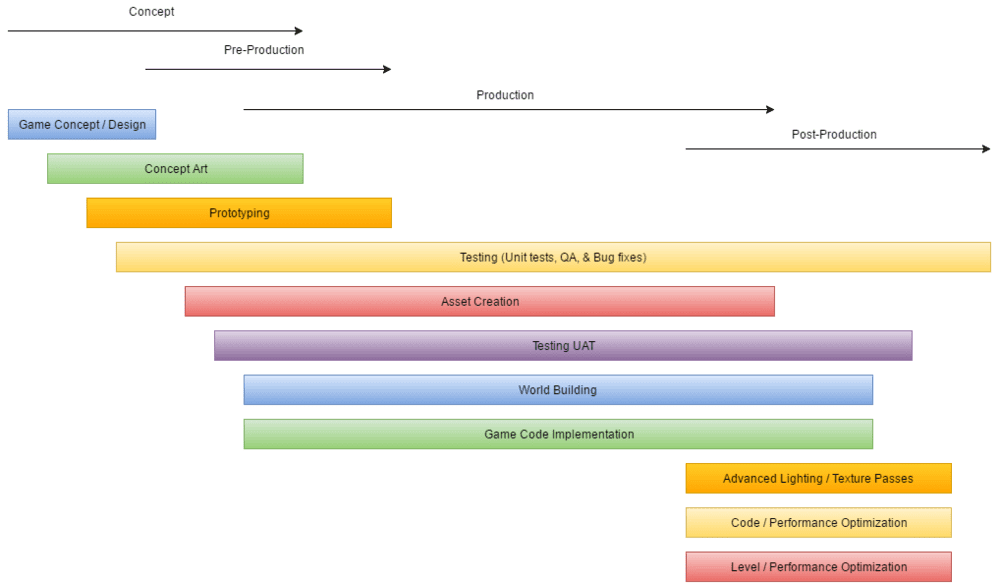The artistic workflow in video game design involves a pre-production phase where the concept, target audience, themes, and overall design direction are identified. This phase involves concept development, storyboarding, concept art, and research that determine the game’s artistic style, color palette, and visual effects. The production phase involves building the game from the ground up, including art direction, game design, asset creation, and integration. Testing and iteration follow, addressing bugs, glitches, and other issues. The post-production phase involves refining the game for release through polishing, marketing, and promotion. Understanding this workflow is key to creating visually stunning and engaging video games.
Understanding the Artistic Workflow in Video Game Design
Video games are complex interactive experiences that have evolved significantly over the years in terms of design, graphics, and technology. Understanding the artistic workflow in video game design is essential to creating games that are visually stunning and capture players’ attention. Game design is a complex and multifaceted process that involves many creative professionals, each contributing their skills and talents to bringing the game to life.
The Pre-Production Phase
Before the actual game design process begins, the creative team goes through a pre-production phase where they identify the game’s concept, target audience, themes, and overall design direction. The pre-production phase usually involves several stages, including concept development, storyboarding, concept art, and research. During this phase, the team decides on the game’s artistic style, color palette, and visual effects.
Concept Development
The first step in the pre-production phase is concept development. The creative team generates ideas, brainstorming sessions, and decides on the general direction the game will take. They identify the game’s genre, story, characters, and unique selling proposition. This phase lays the foundation for the game’s development and can define its success.
Storyboarding
Once the game’s concept has been defined, the team creates storyboards that outline the game’s narrative in visual form. These storyboards serve as a blueprint for the game’s design, level layout, and pacing.
Concept Art
The concept art phase involves creating visual representations of the game’s characters, environments, and objects. Concept artists use various tools and techniques to create these illustrations, such as sketches, digital painting, 3D modeling, and rendering. These concepts help guide the rest of the creative team as they proceed with the development process.
Research
Research is an essential phase in the pre-production process, and it involves gathering information about the game’s theme, setting, and genre. The creative team may conduct market research to identify trends and gain insights into the needs and desires of their target audience. They may also conduct visual research, looking at existing games and gathering inspiration from art, film, and other mediums.
The Production Phase
The production phase is where the game is built from the ground up. This stage involves several teams working simultaneously, including artists, programmers, writers, and designers. The team uses a variety of tools and software to bring the game to life, including game engines, 3D modeling software, special effects software, and more.
Art Direction
Art direction is a crucial element in game production, involving the direction of the art style, including the game’s color scheme, lighting, and overall look and feel. The art direction of a game can strongly impact its reception and success among players.
Game Design
Game design involves creating and designing the mechanics and systems that make up the gameplay, including the game’s character, level layout, challenges, and objectives. Game designers work closely with the art team to create a cohesive experience that is both engaging and visually appealing.
Asset Creation
Asset creation is the process of creating game objects, characters, environments, and more. The art team uses various tools and techniques to create these assets, including 3D modeling software, texturing tools, and digital painting software. These assets are then integrated into the game engine for use in the final game.
Integration
Integration involves bringing all of the game’s assets and components together in one cohesive experience. The game’s mechanics, characters, environments, and other assets are integrated into the game engine to create a playable game.
Testing and Iteration
Game development involves substantial testing and iteration, where the team plays the game and identifies bugs, glitches, and other issues. These issues are then addressed through ongoing development, testing, and refinement until the final product is complete.
The Post-Production Phase
The post-production phase involves polishing and refining the game for release. This stage may involve fine-tuning the game’s mechanics, sound design, and artwork. The creative team may also work on marketing materials and promotional content to build anticipation and generate buzz for the game’s release.
Polishing
Polishing involves fine-tuning the game’s graphics, sound, and gameplay elements to create a more cohesive and enjoyable experience. This may involve making minor visual adjustments, tweaking sound effects or balancing the game’s difficulty curve.
Marketing and Promotion
Marketing and promotion are a crucial aspect of the post-production phase. The marketing team works on creating promotional materials, trailers, and other content to build anticipation and promote the game’s release.
Conclusion
Understanding the artistic workflow in video game design is essential to creating games that are visually stunning and engaging. The game design process involves multiple creative professionals working together to bring the game to life, from concept development to integration and testing. Through the art direction, game design, asset creation, and integration, a cohesive and enjoyable video game experience can be created.
